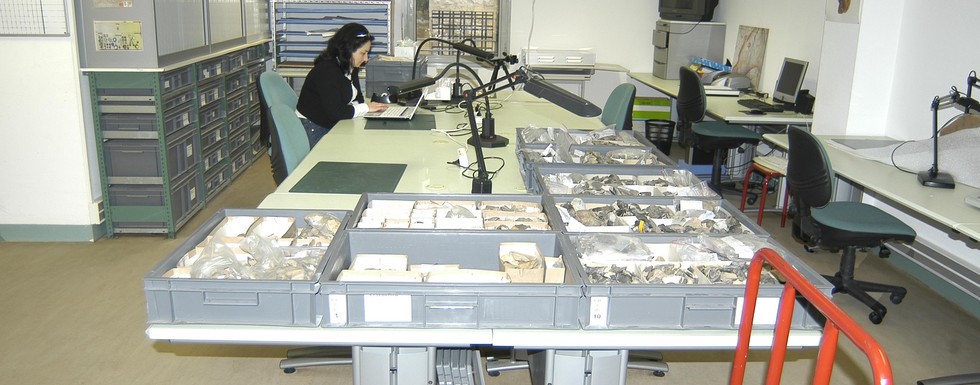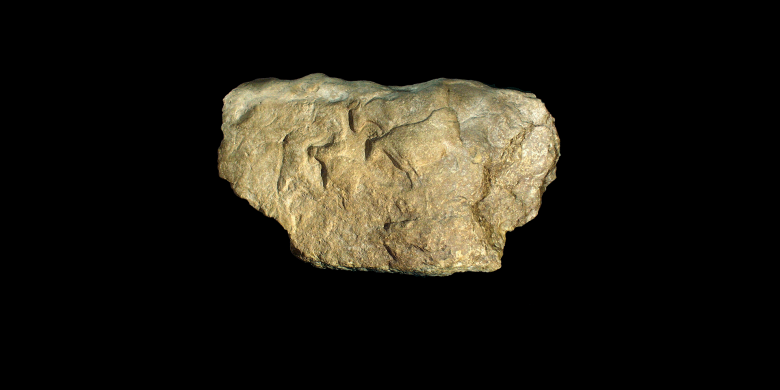
If you want to study the museum collection or its documentation, please complete the following form
Beyond its role of presenting its collections to the public, the National Prehistory Museum accomplishes several other tasks:
- preservation of national heritage
- recognition and expertise of archaeological relics
- participation in excavation sites
- scientific publications (periodicals, research monographs…)
Being a research centre, it welcomes archaeologists and students from around the world and collaborates with various French and foreign institutions (National Prehistory Centre in Périgueux, The Prehistory and Quaternary Period Geology Institute in Bordeaux…). Its laboratory is made up of an animal bone library, a stone tool library, a collection of paleontological comparison…
Animal Bone Library
Since 1989 the museum has built up an animal bone library to meet the needs of researchers as a reference collection. As such, it was able to acquire various skeletons of regional fauna in all its diversity (deer, wild boar, fox, martens, genet…) as well as bones of less common animals that lived during the Palaeolithic epoch: reindeer, bison, Saiga antelopes, muskoxen, aurochs, ibex, chamois, wolves… This collection is even more important because these animals are rarely presented in the collections of natural history museums of the Aquitaine region.
The Stone Tool Library
In archaeology, for nearly twenty years, the characterisation and study of the origin of raw materials has been one of the indispensable steps in any work on lithic material. In order to perform this type of analysis, it is crucial to have a reference collection: the Stone Tool Library. Collaborating with the Prehistory and Quaternary Period Geology Institute at the University of Bordeaux I, with the support of the Geological and Mining Research Bureau (B.R.G.M) and the help of a large number of researchers for Aquitaine working on the subject, the National Prehistory Museum has created a digital stone tool library primarily dedicated, for the time being, to the Périgord province.
It consists of:
- • quickly consultable documents (booklets grouping the different types of silification of a dwelling),
- stocks of samples for use by future generations.
Dwelling floors
A policy of controlled moulding (duplication of originals and the end of a study and conservation) goes along with this research:
- moulds taken of the stratigraphic reference sequences of the region or even beyond (Dmanisi in Georgia, for example)
- moulds taken of original dwelling structures (or structures equivalent to originals) within the same geographic boundaries.
- Finally, products of scientifically controlled experiments (in the domain of flint carving, bone working, essentially) make up an essential base that helps with the details and interpretation of original pieces.
Finally, products of scientifically controlled experiments (in the domain of flint carving, bone working, essentially) make up an essential base that helps with the details and interpretation of original pieces.


